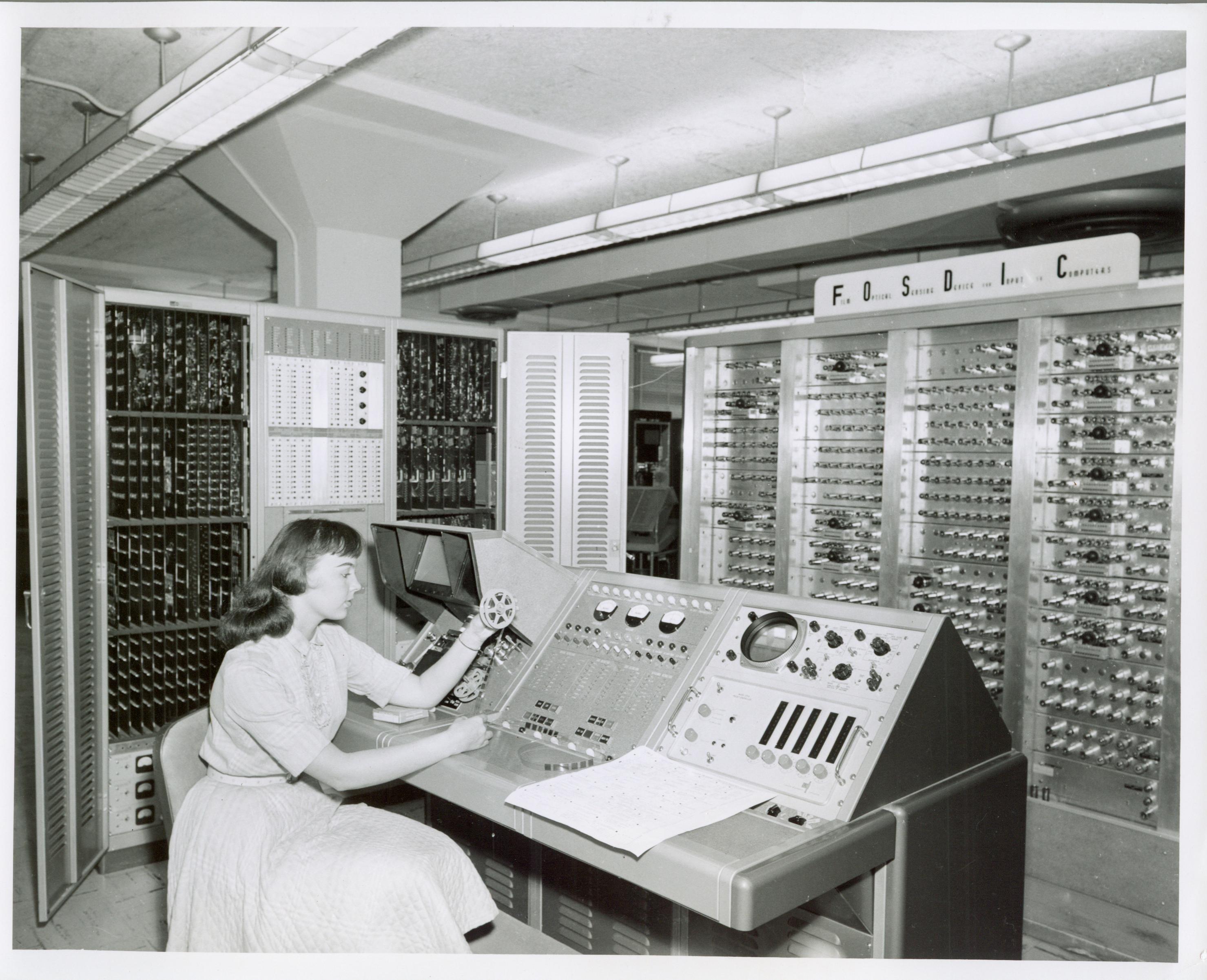FOSDIC on:
[Wikipedia]
[Google]
[Amazon]
 FOSDIC (Film Optical Sensing Device for Input to Computers) is a family of optical scanners for converting data on microfilm to computer-readable magnetic tape. FOSDIC was designed and built by the United States
FOSDIC (Film Optical Sensing Device for Input to Computers) is a family of optical scanners for converting data on microfilm to computer-readable magnetic tape. FOSDIC was designed and built by the United States
The World War II Army Enlistment Records File and Access to Archival Databases
Theodore J. Hull, Prologue Magazine, Spring 2006, Vol. 38, No. 1, accessed 2017-7-19
 FOSDIC (Film Optical Sensing Device for Input to Computers) is a family of optical scanners for converting data on microfilm to computer-readable magnetic tape. FOSDIC was designed and built by the United States
FOSDIC (Film Optical Sensing Device for Input to Computers) is a family of optical scanners for converting data on microfilm to computer-readable magnetic tape. FOSDIC was designed and built by the United States National Bureau of Standards
The National Institute of Standards and Technology (NIST) is an agency of the United States Department of Commerce whose mission is to promote American innovation and industrial competitiveness. NIST's activities are organized into physical sci ...
for use by the United States Census Bureau
The United States Census Bureau (USCB), officially the Bureau of the Census, is a principal agency of the U.S. Federal Statistical System, responsible for producing data about the American people and economy
An economy is an area of th ...
and other government agencies.
Although the Census Bureau entered the computer age with the introduction of UNIVAC I
The UNIVAC I (Universal Automatic Computer I) was the first general-purpose electronic digital computer design for business application produced in the United States. It was designed principally by J. Presper Eckert and John Mauchly, the invent ...
in 1951, its data processing speed was hampered by the continued reliance upon punched card
A punched card (also punch card or punched-card) is a piece of stiff paper that holds digital data represented by the presence or absence of holes in predefined positions. Punched cards were once common in data processing applications or to di ...
s. Transferring questionnaire data to punch cards that UNIVAC "read" and stored on magnetic tape
Magnetic tape is a medium for magnetic storage made of a thin, magnetizable coating on a long, narrow strip of plastic film. It was developed in Germany in 1928, based on the earlier magnetic wire recording from Denmark. Devices that use mag ...
was a time-consuming process that remained relatively unchanged since the late nineteenth century.
To take advantage of UNIVAC's speed, National Bureau of Standards scientists and Census Bureau engineers began development of FOSDIC. Completed in 1954, the first generation of FOSDIC read the position of pencil-filled circles on questionnaires and translated the responses to computer code stored on magnetic computer tape.
The Census Bureau first used FOSDIC to process a decennial census in 1960. Enumerators transferred data collected on questionnaires to a "FOSDIC-readable schedule" on which questionnaire responses were recorded as pencilled-in circles. At the Census Bureau, technicians used extremely sensitive photography equipment to convert these forms into microfilm. In 1970 and later censuses, all questionnaires were FOSDIC readable, eliminating the need to have enumerators transfer data from questionnaires to FOSDIC schedules.
The shaded circles appeared as light dots on the microfilm. When the microfilm passed through the Census Bureau's new fleet of FOSDIC III machines (FOSDIC II had been designed for the Weather Bureau), they read the placement of the bright marks on the microfilm and translated them into computer code.
The Census Bureau used updated versions of FOSDIC for the 1970, 1980, and 1990 censuses. FOSDIC proved so successful that it was not replaced until the introduction of optical character recognition
Optical character recognition or optical character reader (OCR) is the electronic or mechanical conversion of images of typed, handwritten or printed text into machine-encoded text, whether from a scanned document, a photo of a document, a sc ...
for the 2000 Census.
Technology
A series of systems were developed for use in the 1960, 1970, 1980 and 1990 U.S. census. The first system, delivered in 1954 usedvacuum tube
A vacuum tube, electron tube, valve (British usage), or tube (North America), is a device that controls electric current flow in a high vacuum between electrodes to which an electric voltage, potential difference has been applied.
The type kn ...
s and analog processing. Later versions used software control with a PDP-11
The PDP-11 is a series of 16-bit minicomputers sold by Digital Equipment Corporation (DEC) from 1970 into the 1990s, one of a set of products in the Programmed Data Processor (PDP) series. In total, around 600,000 PDP-11s of all models were so ...
minicomputer. FOSDIC used a flying-spot scanner
A flying-spot scanner (FSS) uses a scanning source of a spot of light, such as a high-resolution, high-light-output, low-persistence cathode ray tube (CRT), to scan an image. Usually the image to be scanned is on photographic film, such as moti ...
to detect marks on forms that had previously been photographed on microfilm. Other applications included digitizing unemployment data, EPA Pollutant charts, NOAA Underwater current meter records and . The U.S. Postal Research Laboratory used a surplus FOSDIC system to make high-resolution images of dead-letter mail to create a data base for evaluating character-recognition techniques
The FOSDIC system was also use by the National Archives to digitize the images of Army enlistment records on punched card
A punched card (also punch card or punched-card) is a piece of stiff paper that holds digital data represented by the presence or absence of holes in predefined positions. Punched cards were once common in data processing applications or to di ...
that were stored on 1,586 rolls of microfilm.Theodore J. Hull, Prologue Magazine, Spring 2006, Vol. 38, No. 1, accessed 2017-7-19
Sources
References
{{reflist National Institute of Standards and Technology